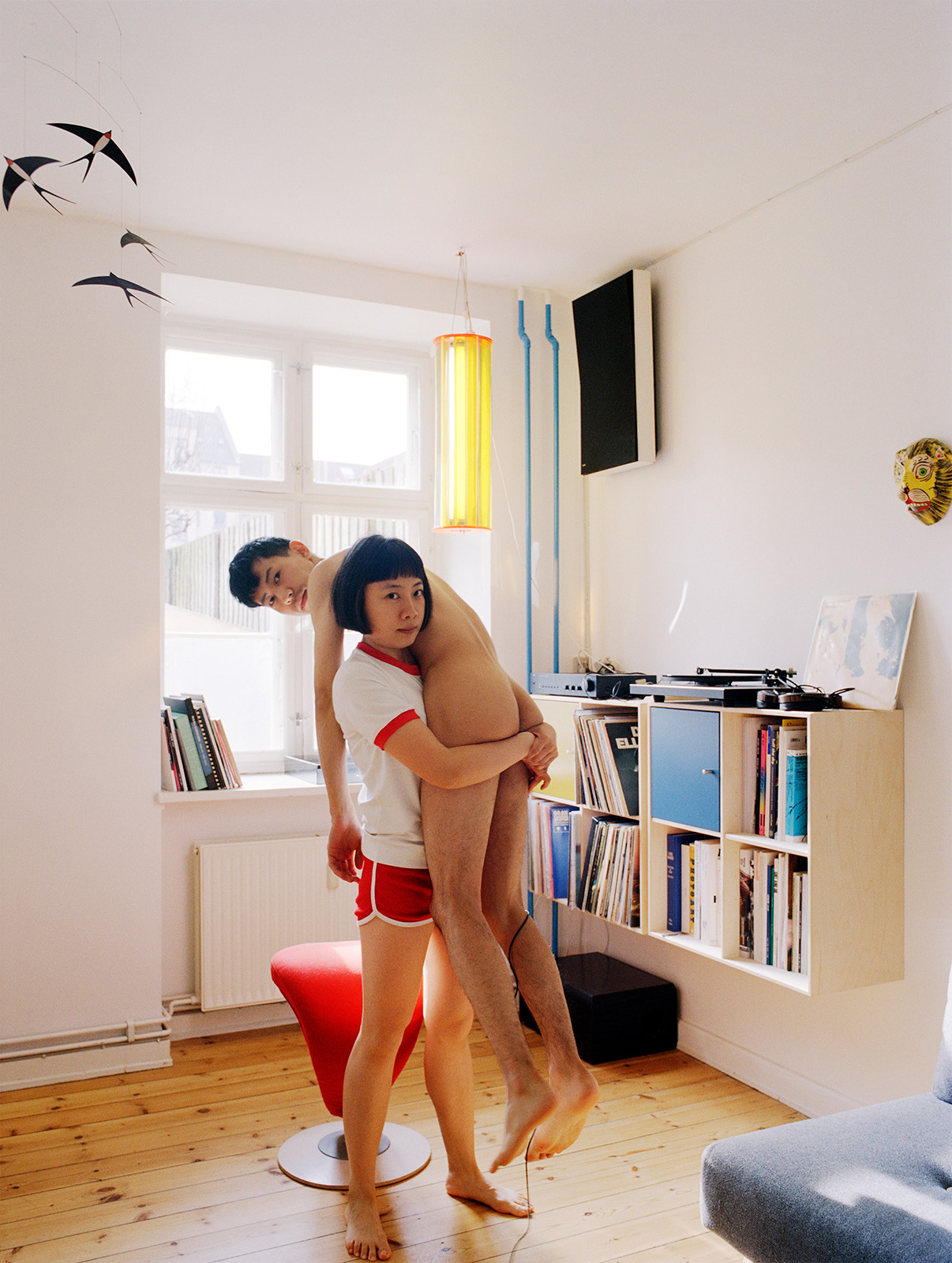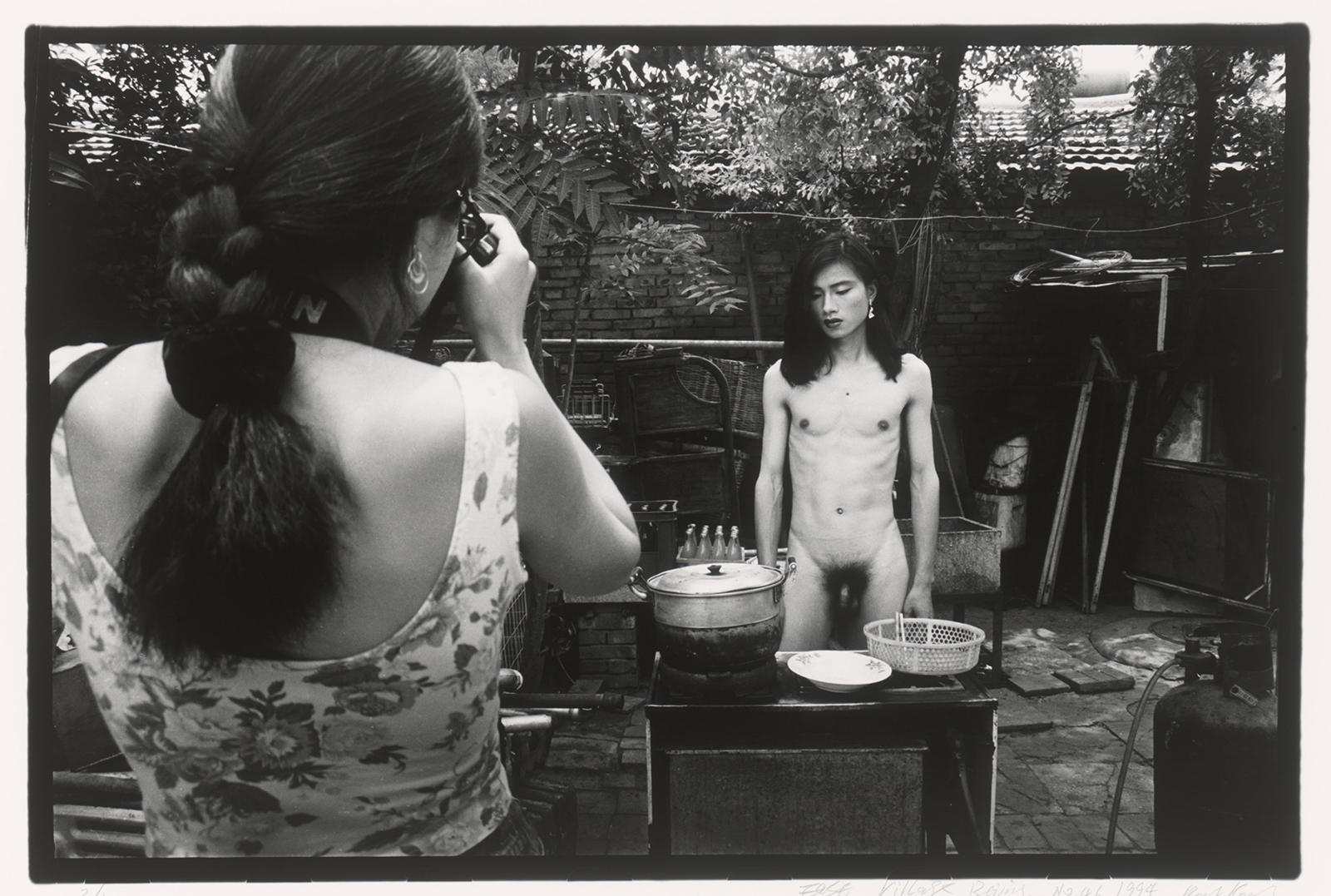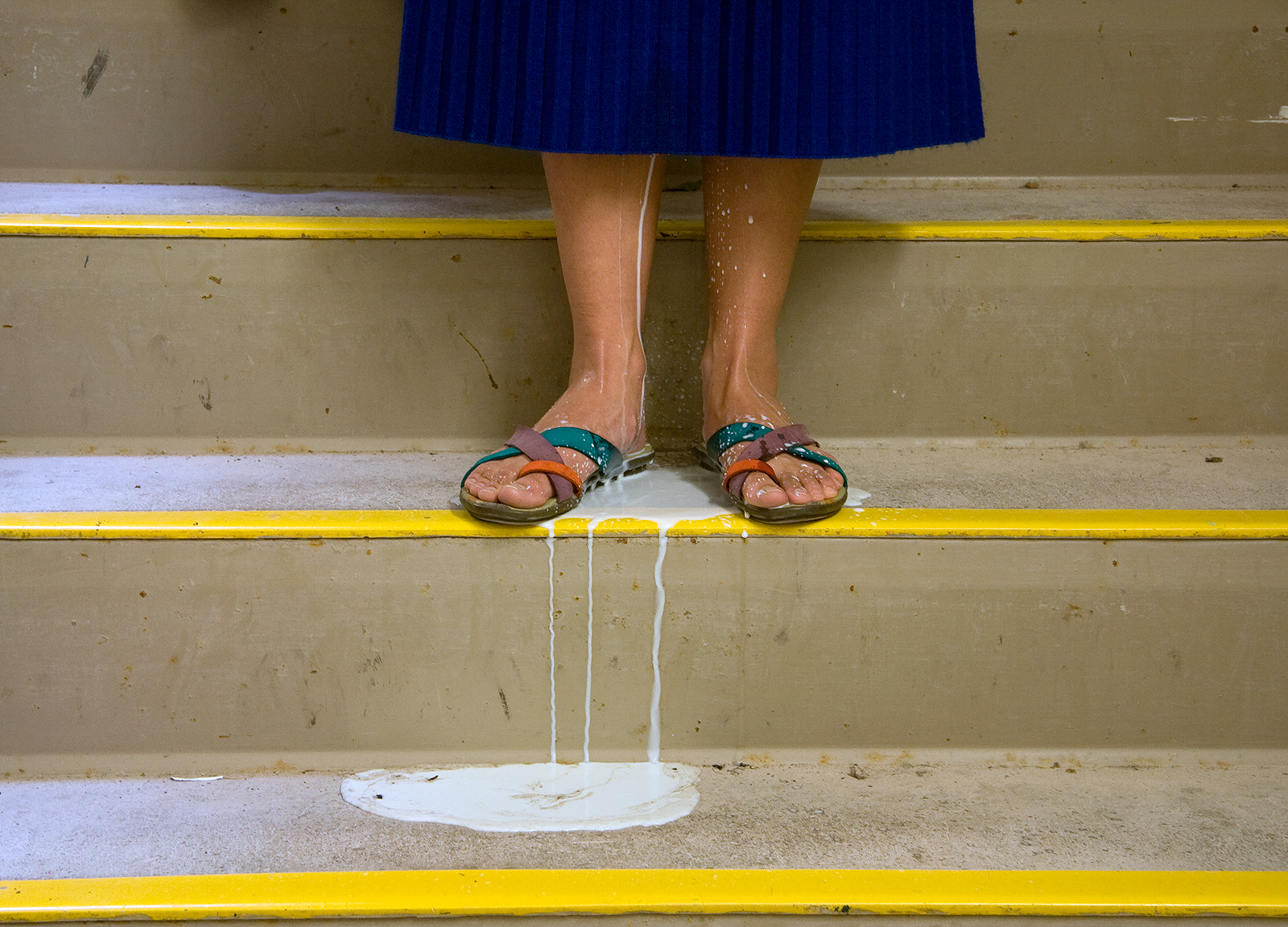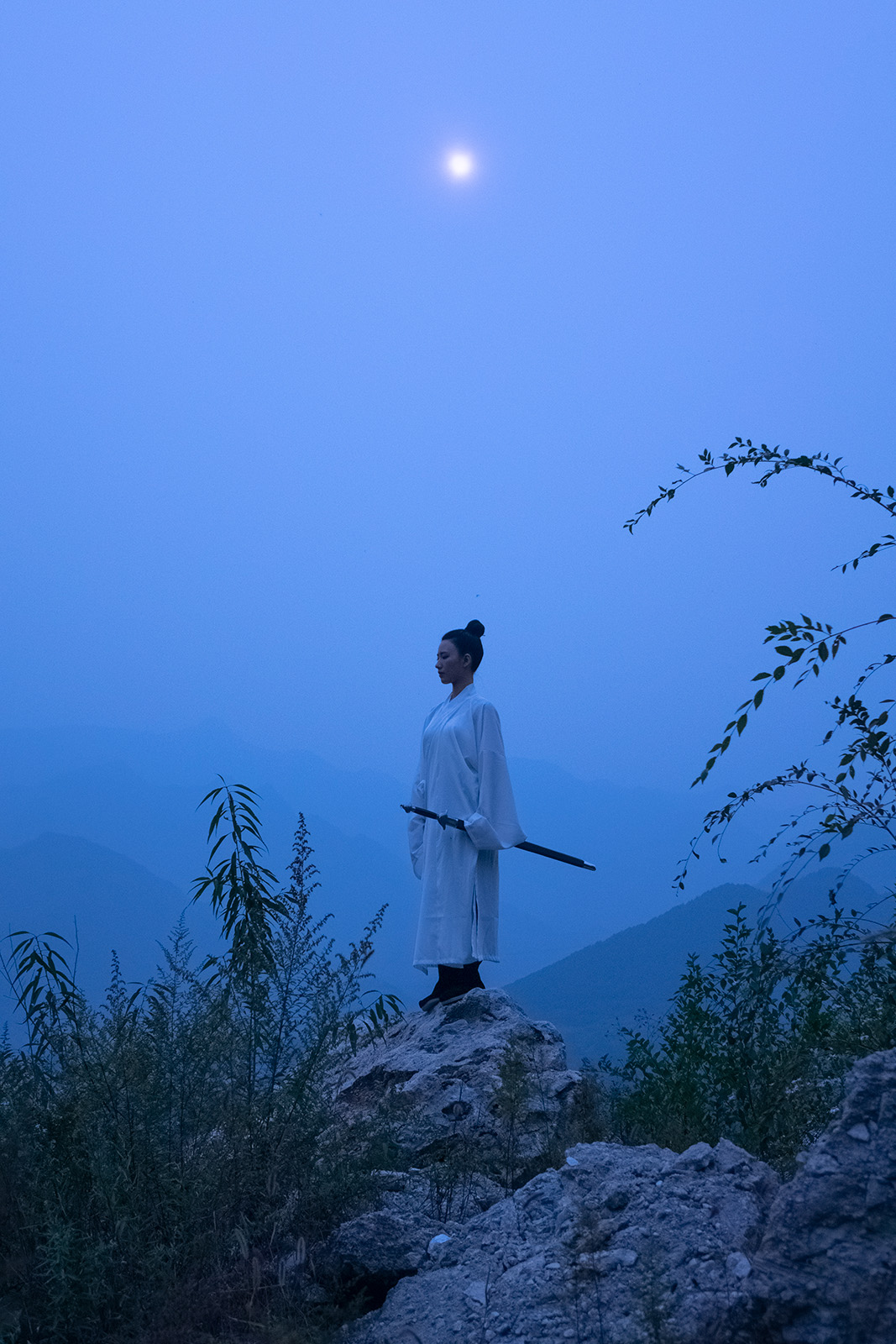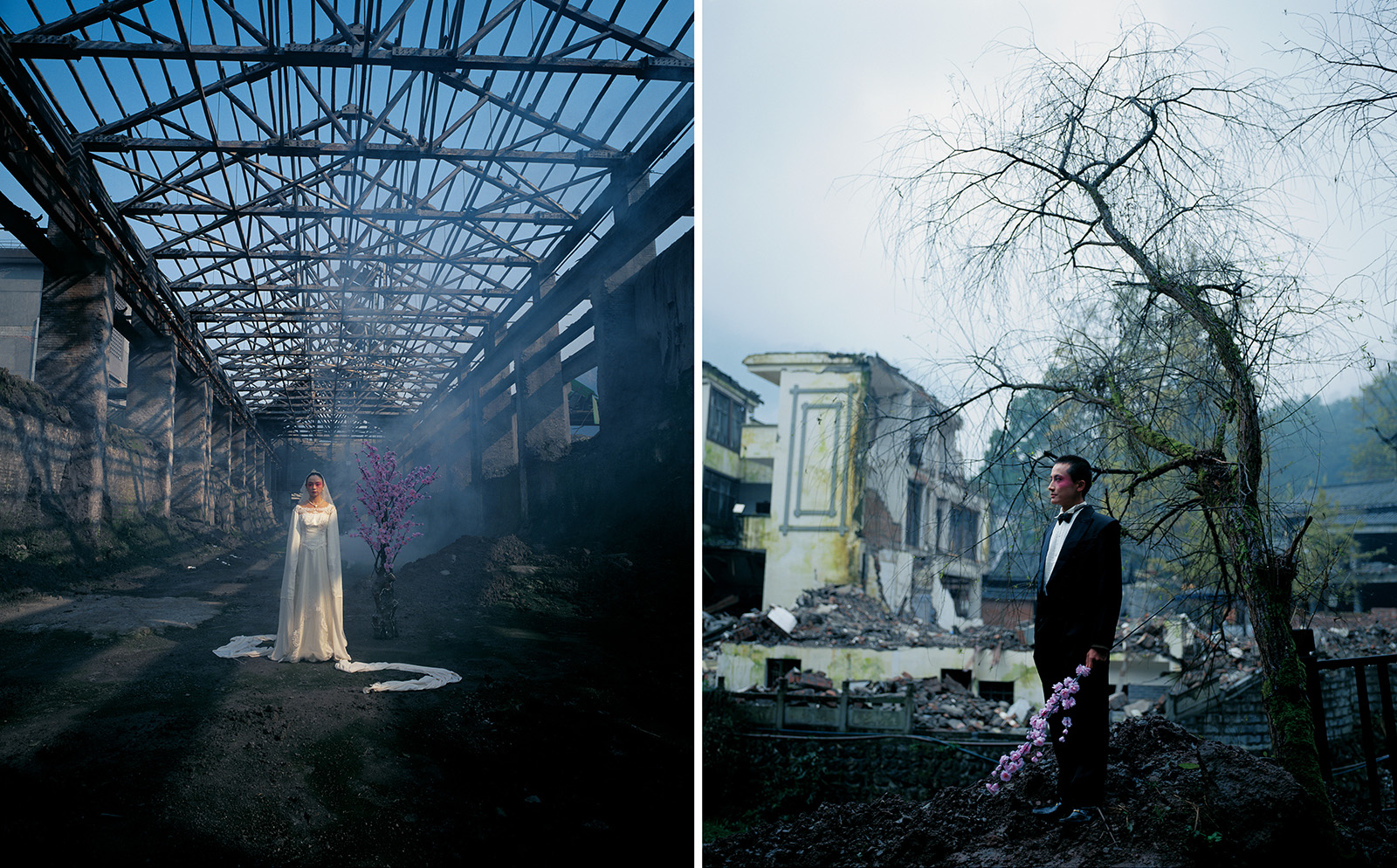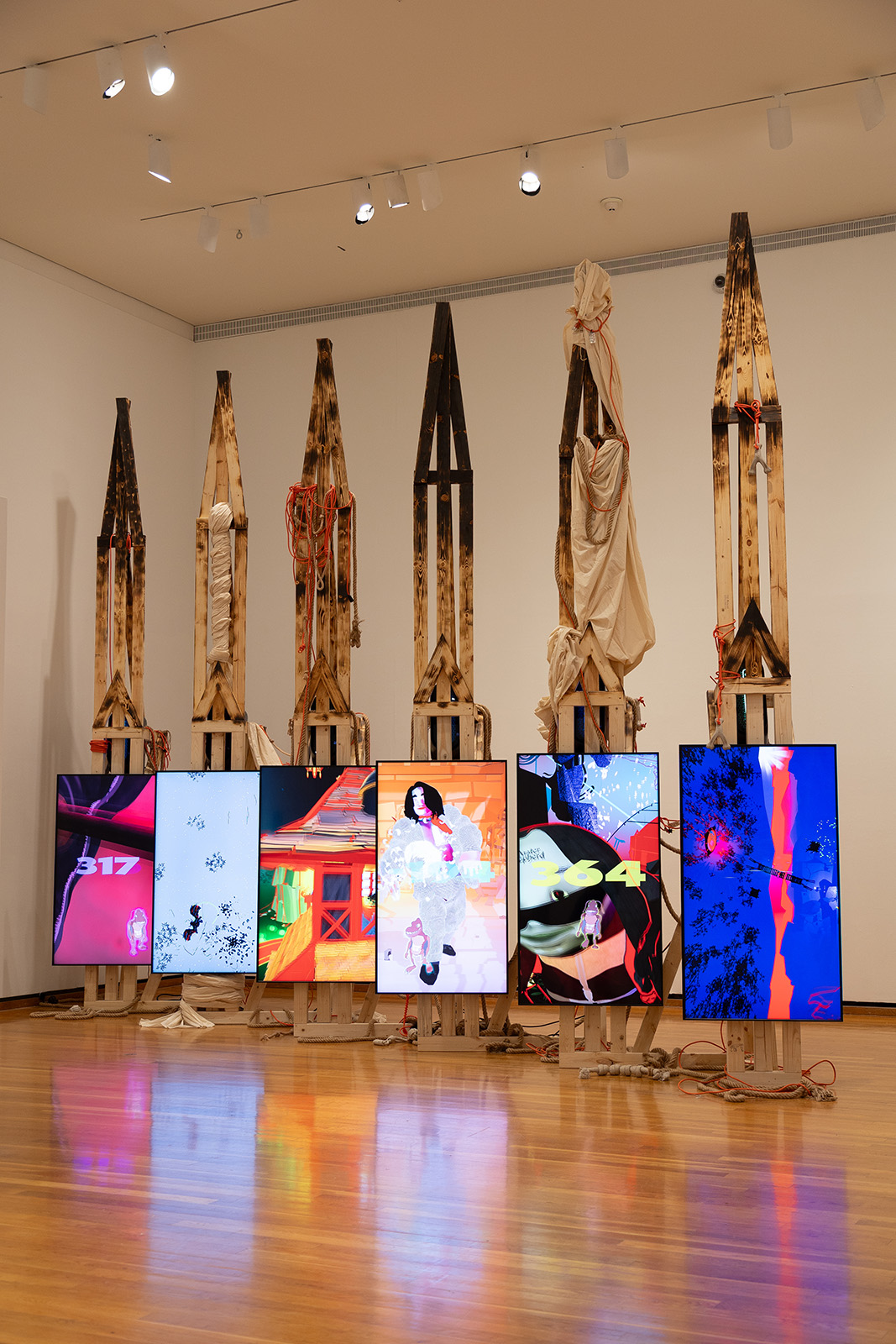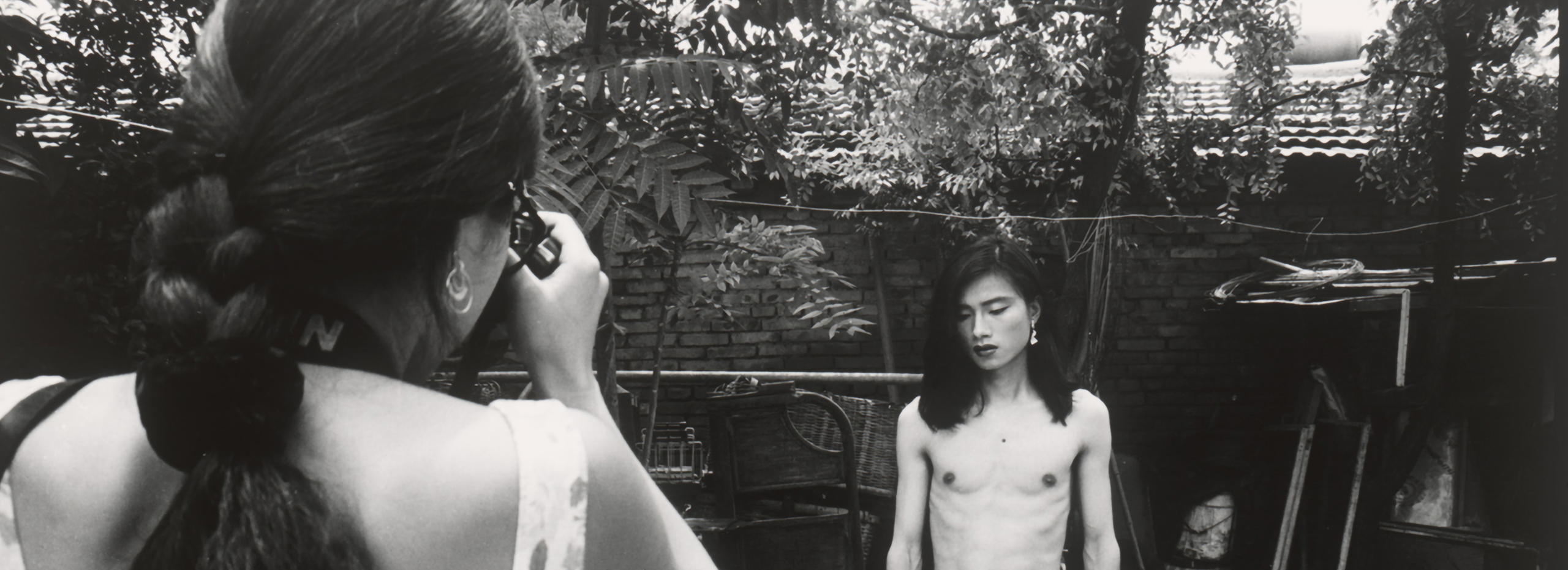
In the Bartels Gallery on Floor 1L and in the Schaenen and Class of 1953 Galleries on Floor 2L
In conjunction with this exhibition, the Johnson Museum hosted Wu Hung, the Harrie A. Vanderstappen Distinguished Service Professor of Art History and the College at the University of Chicago and an adjunct curator at the Smart Museum of Art, as the 2023 Stoikov Lecture on Asian Art, funded by a generous gift from Judith Stoikov, Class of 1963: click here to watch.
Spontaneous and ephemeral, performance art in China developed in the 1980s and ’90s among close-knit artistic circles and audiences. Such performances relied heavily on photographs, video documentation, artist books, and oral accounts to be disseminated to subsequent audiences. Initially, these photographs and videos were considered documentations of performances rather than artworks in and of themselves. Increasingly, however, their outsize role in staging and mediating performances prompted new interest in their artistic potentials. As the Beijing-based artist Song Dong has remarked about his own photographed performances, “Is it a photographic work or a performance work? It’s very hard to say, so I always dislike calling my works documentations of performances.”
Performance photographs and videos allow secondary audiences to reimagine and become contemporary with performances past. A performance work might be staged spontaneously by an artist, photographed in distinct ways by different artists, witnessed by a small group of primary audiences, and exhibited many years later as a photograph or video for an entirely separate group of audiences. These instances of mediation point to the multimedial nature of performance works and pose questions about where the “real” artwork can be located, if at all.
Intersections between performance art and the rise of conceptual photography in China during the mid-to-late-1990s further blurred the boundaries between performance and documentation. In cases where a performance is staged without a live audience for the purpose of being conveyed as a photograph or video, the document itself becomes the performance.
For artists aware of the potential risks of censorship, the ability to convey performances through a variety of different mediums, including underground artist publications, enhanced performance art’s subversive potential. Yet not all performances can be understood through this framework. While photographers Xing Danwen and RongRong were known for documenting seminal works by performance artists such as Zhang Huan and Ma Liuming in the 1990s, they have since expanded their art practice to emphasize the performative potential of photography and video. Other artists such as Song Dong, Qiu Zhijie, Lin Yilin, and Liu Bolin use photography and video to visualize the simultaneous visibility and invisibility of their own bodies. Videos by Chen Xiaoyun, Cheng Ran, and Jiang Zhi from the collection of Dr. Michael I. Jacobs, MD ’77, a prescient early collector of videos by emerging Chinese artists, thematize the visceral and theatrical body. More recently, a new generation of female artists including Chen Qiulin, Pixy Liao, Ma Qiusha, and Miao Ying—a recipient of the 2019 Cornell Tech \Art Award—has combined performance, photography, video, new media, and even artificial intelligence to address a range of topics from the individual’s relationship to the changing cityscape to gender, sexuality, and behavior in the age of media culture.
Between Performance and Documentation: Contemporary Photography and Video from China brings together works from the Johnson Museum collection and archival video footage from Cornell Library’s Wen Pulin Archive of Chinese Avant-garde Art with loans from artists, private collectors, and other institutions. Featuring a wide range of works, the exhibition reveals the multifaceted history of contemporary performance, photography, and video in China, while showcasing emerging artists who continue to push the boundaries of performance and mediation in radically new ways.
The exhibition was curated by Nancy P. Lin, Klarman Postdoctoral Fellow in the Department of History of Art and Visual Studies, and Ellen Avril, chief curator and the Judith H. Stoikov Curator of Asian Art at the Johnson Museum, and supported by a gift endowed in memory of Elizabeth Miller Francis ’47, the Richard Sukenik ’59 Endowment for Photography, the Ames Exhibition Endowment, the Russell ’77 and Diana Hawkins Exhibition Fund, and the Jan Abrams Exhibition Endowment.
A symposium was held on November 17 at the Johnson Museum in conjunction with the exhibition, supported by a generous gift from Judith Stoikov ’63, with a related performance event and keynote lecture on November 16.
Selected Artworks

Hiding in the City, Info Wall
Liu Bolin
Carry the Weight of You
Pixy Liao
Carry the Weight of You
Pixy Liao
Pixy Liao (Chinese, born 1979), Carry the Weight of You, from the series Experimental Relationship, 2017. Digital C-print. Newly acquired through the generosity of the Johnson Museum Friends of Photography Acquisition Committee.
East Village Beijing. 1994. No. 46 (Ma Liuming, “Fen-Ma Liuming’s Lunch”)
RongRong
East Village Beijing. 1994. No. 46 (Ma Liuming, “Fen-Ma Liuming’s Lunch”)
RongRong
RongRong (Chinese, born 1968), East Village Beijing. 1994. No. 46 (Ma Liuming, “Fen-Ma Liuming’s Lunch”), from the portfolio Rong Rong’s East Village, 1993–98; printed 2003. Inkjet print, special edition 247/760. © RongRong
Milk Project Series
Ma Qiusha
Milk Project Series
Ma Qiusha
Ma Qiusha (Chinese, born 1982), Milk Project Series, 2007. Video still photograph. Courtesy of the artist and Beijing Commune.
A Personal Diary
Xing Danwen
A Personal Diary
Xing Danwen
Xing Danwen (Chinese, born 1967), A Personal Diary, 1993–2003. Inkjet print. Courtesy of the artist and SPURS Gallery.
Thread
Xing Danwen
Thread
Xing Danwen
Xing Danwen (Chinese, born 1967), Thread, 2017. Two-channel HD video with sound, 10 mins. Courtesy of the artist.
Safely Crossing Linhe Road, Guangzhou
Lin Yilin
Safely Crossing Linhe Road, Guangzhou
Lin Yilin
Lin Yilin (Chinese, born 1964), Safely Crossing Linhe Road, Guangzhou, 1995. Performance photograph. Courtesy of the artist.
similar disguise, episodes 1–5
Tao Hui
similar disguise, episodes 1–5
Tao Hui
Tao Hui (Chinese, born 1987), similar disguise still, 2021. Archival pigment print. Courtesy of the artist; Kiang Malingue, Hong Kong; and Esther Schipper Gallery, Berlin/Paris/Seoul. © Tao Hui
Peach Blossom No. 1 and No. 2
Chen Qiulin
Peach Blossom No. 1 and No. 2
Chen Qiulin
Chen Qiulin (Chinese, born 1975), Peach Blossom No. 1 and No. 2, 2009. Video stills. Courtesy of the artist and A Thousand Plateaus Gallery.
Tattoo 1 and Tattoo 2
Qiu Zhijie
Tattoo 1 and Tattoo 2
Qiu Zhijie
Qiu Zhijie (Chinese, born 1969), Tattoo 1 and Tattoo 2, 1997. Chromogenic prints. Collection of the David and Alfred Smart Museum of Art, the University of Chicago; Purchase, Gift of Carl Rungius, by exchange, 2000.6 and 2000.7. Photograph © 2023 courtesy of the Smart Museum of Art.
Pilgrimage into Walden XII Project, Chapter I: The Honor of Shepherds
Miao Ying
Pilgrimage into Walden XII Project, Chapter I: The Honor of Shepherds
Miao Ying
Miao Ying (Chinese, born 1985), Pilgrimage into Walden XII Project, Chapter I: The Honor of Shepherds, 2019–20. Six machine-learning AI live simulation softwares on computers. Installation view at the Johnson Museum of Art (Photo: David O. Brown).










